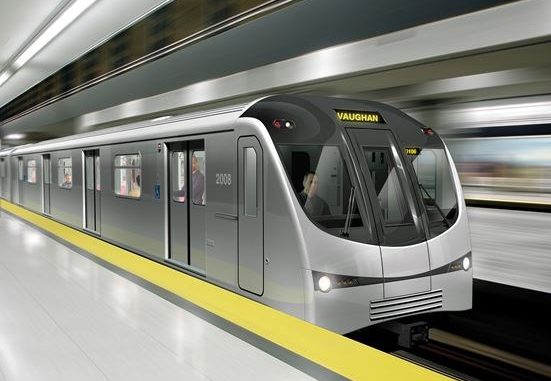
Building Transit Faster Act Will Accelerate Delivery of Priority Transit Projects, Support Economic Recovery
TORONTO ― Ontario is building a modern, reliable and sustainable transit system for the 21st century that will get people moving, reduce congestion, and drive economic growth and job creation. Today, Bill 171, the Building Transit Faster Act, 2020, was passed by the Ontario legislature.
The legislation, once in force, enables the province to expedite the process of building Ontario’s four priority transit projects, which will get people to where they want to go, reduce congestion, and drive economic growth and job creation. The projects include the all-new Ontario Line, the Yonge North Subway Extension to Markham and Richmond Hill, the improved three-stop Scarborough Subway Extension, and the Eglinton Crosstown West Extension to Pearson airport.
“Getting more transit built faster will help reduce gridlock, deliver a modern rapid transit system for the province and become a major contributor to our economic recovery,” said Premier Doug Ford. “These four priority transit projects will create thousands of jobs, provide more housing options for people, and open up countless opportunities for businesses throughout the Greater Toronto Area and beyond.”
“During consultations and throughout debate, we heard a common theme from a wide range of people who reinforced how important it is to not only build transit quickly, but to also get it right,” said Caroline Mulroney, Minister of Transportation. “That is why we’ve focused solely on eliminating the roadblocks that cause unnecessary delays, so we can deliver these major transit projects as quickly and cost effectively as possible.”
This legislation supports Premier Ford’s “New Subway Transit Plan for the GTA” ― representing the largest subway expansion in Canadian history. The legislation, once in force, will expedite the planning, design and construction process for the four priority subway projects by:
- Enabling relocation of utilities more efficiently, while treating businesses fairly, and ensuring costs are not passed on to consumers;
- Better enabling the assembly of land required to construct stations, conduct tunneling and prepare sites, while treating property owners fairly;
- Ensuring timely access to municipal services and rights-of-way;
- Allowing the province to conduct due diligence work and remove physical barriers with appropriate notification to property owners; and,
- Ensuring nearby developments or construction projects are coordinated so they do not cause delays.
“Now that legislation has passed, we continue to call on the federal government to come to the table and fund at least 40 per cent of these nationally-significant subway projects that will provide a modern, efficient rapid transit system, benefiting all transit riders and taxpayers,” said Kinga Surma, Associate Minister of Transportation (GTA). “With the passage of this bill, we can get shovels in the ground sooner and get skilled people back to work as we restart the economy and recover from COVID-19.”
“The passage of this legislation gets us closer to building much-needed transit infrastructure to reduce congestion and contribute to the economic recovery and renewal of our province,” said Laurie Scott, Minister of Infrastructure. “We are committed to fulfilling our promise to get people where they want to go when they want to get there.”
Working together with its municipal and federal partners on priority transit projects, the government is building a world-class rapid transit system and developing transit-oriented communities with a greater variety of affordable housing options.
Quick Facts
- Ontario signed preliminary agreements with the City of Toronto and the Region of York, laying the foundation for continued collaboration towards the shared goal of the accelerated delivery of the four priority transit projects.
- The Business Cases for the four priority transit projects, published by Metrolinx, demonstrate how, once complete, the subway plan will provide improved connections with other transit systems across the network, congestion relief on roadways, and better connections to jobs.
- For example, the 15.5 km Ontario Line will provide 154,000 more people with walking distance access to rapid transit and see 389,000 daily boardings, with 53,000 more jobs accessible within a 45-minute transit commute for Toronto residents.
- The Scarborough Subway Extension, an approximately 8 km long extension of the Toronto Transit Commission’s Bloor Danforth Line 2 from the existing terminus Kennedy Station, will provide 38,000 more people with walking distance access to rapid transit and see 105,000 daily boardings.
- The Eglinton Crosstown West Extension will extend the Eglinton Crosstown Light Rail Transit (LRT) project by 9.2 km from Mount Dennis Station to Renforth Drive, and will see a 23 per cent increase in weekday boardings on the Mississauga Transitway and eastward section of the Crosstown LRT, with 31,000 more jobs within a 10-minute walk to a station and a total of 37,000 daily boardings expected.
- Ontario is using a P3 model to deliver these projects, to achieve greater efficiency and cost effectiveness.

Leave a Reply